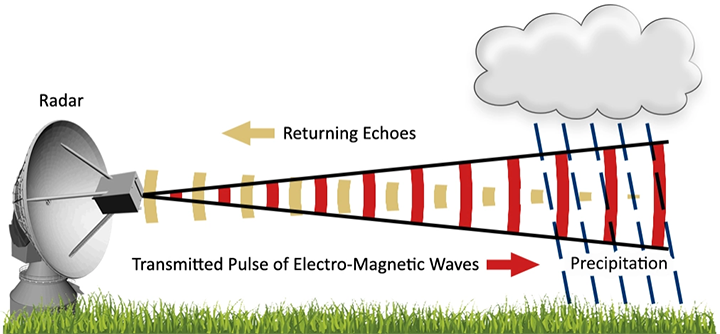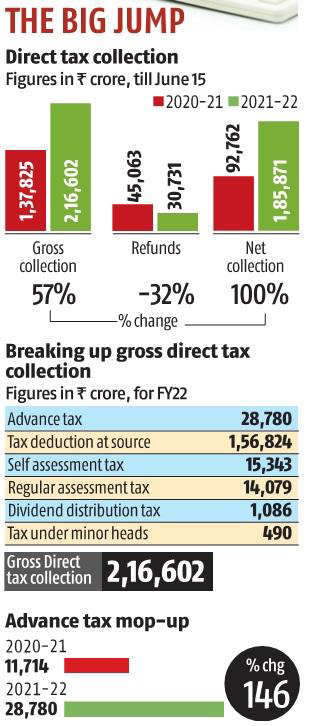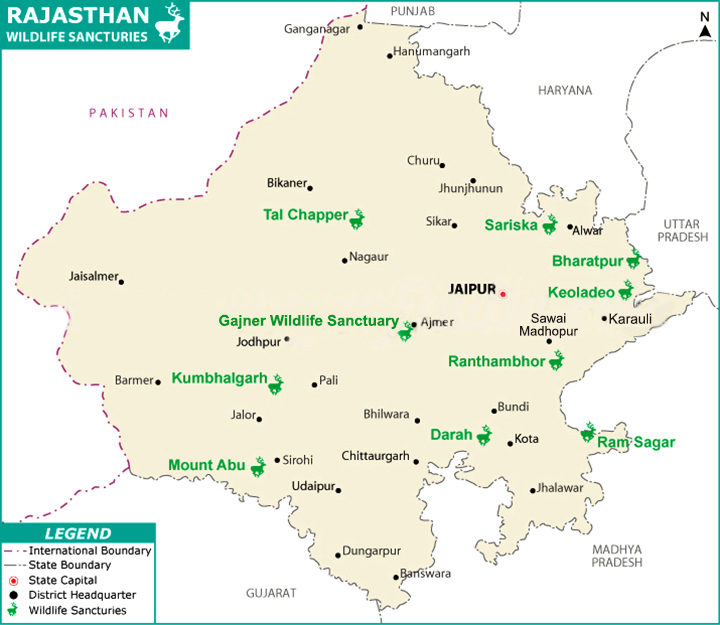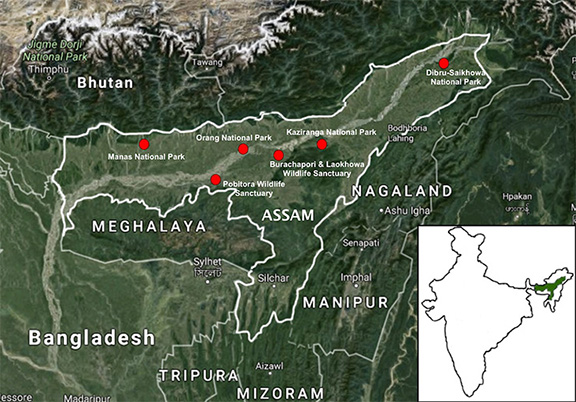Biodiversity & Environment
Great Barrier Reef
Why in News
Recently, the UNESCO World Heritage Committee has recommended that the Australia’s Great Barrier Reef should be added to a list of “in danger” World Heritage Sites.
- Placement on the ‘‘in-danger list’’ is not considered a sanction.
- Some nations have their sites added to gain international attention and help to save them.
Key Points
- Reason behind this Move:
- It was recommended to add to the list because of the impact of climate change.
- Despite Reef 2050, the coral reef ecosystem has suffered three major bleaching events since 2015 due to severe marine heatwaves.
- The Reef 2050 Long-Term Sustainability Plan is the Australian and Queensland Government’s overarching framework for protecting and managing the Great Barrier Reef by 2050.
- When corals face stress by changes in conditions such as temperature, light, or nutrients, they expel the symbiotic algae zooxanthellae living in their tissues, causing them to turn completely white. This phenomenon is called coral bleaching.
- Marine heatwave is an event of anomalous warm sea surface temperatures (SST) from several days to years.
- Repercussions:
- It prompted environmental groups to take aim at the Australian government's reluctance to take stronger climate action.
- Australia, which is one of the world's largest carbon emitters per capita, has remained reluctant to commit to stronger climate action and has cited jobs as a major reason to back the country's fossil fuel industries.
- It has not updated its climate goals since 2015.
- About Great Barrier Reef:
- It is the world’s most extensive and spectacular coral reef ecosystem composed of over 2,900 individual reefs and 900 islands.
- The reef is located in the Coral Sea (North-East Coast), off the coast of Queensland, Australia.
- It can be seen from outer space and is the world’s biggest single structure made by living organisms.
- This reef structure is composed of and built by billions of tiny organisms, known as coral polyps.
- They are made up of genetically identical organisms called polyps, which are tiny, soft-bodied organisms. At their base is a hard, protective limestone skeleton called a calicle, which forms the structure of coral reefs.
- These polyps have microscopic algae called zooxanthellae living within their tissues. The corals and algae have a mutualistic (symbiotic) relationship.
- It was selected as a World Heritage Site in 1981.
- Initiatives to Protect Corals:
- A number of global initiatives are being taken to address the issues, like:
- International Coral Reef Initiative
- Global Coral Reef Monitoring Network (GCRMN)
- Global Coral Reef Alliance (GCRA)
- The Global Coral Reef R&D Accelerator Platform
- Similarly, the Ministry of Environment and Forests and Climate Change (MoEF&CC), India has included the studies on coral reefs under the Coastal Zone Studies (CZS).
- In India, the Zoological Survey of India (ZSI), with help from Gujarat’s forest department, is attempting a process to restore coral reefs using “biorock” or mineral accretion technology.
- National Coastal Mission Programme, to protect and sustain coral reefs in the country.
- A number of global initiatives are being taken to address the issues, like:
Coral Reef
- Largest Coral Reef Area:
- Indonesia has the largest coral reef area in the world.
- India, Maldives, Sri Lanka and Chagos have the maximum coral reefs in South Asia.
- The Great Barrier Reef of the Queensland coast of Australia is the largest aggregation of coral reefs.
- Coral Reef Areas in India:
- India has four coral reef areas: Gulf of Mannar, Andaman and Nicobar Islands, Lakshadweep islands and the Gulf of Kutch.
- Benefits:
- Protect humanity from natural calamities.
- Provide revenue and employment through tourism and recreation.
- Provide habitats for fishes, starfish and sea anemones.
- Use:
- They are used in jewellery.
- Coral blocks are used for buildings and road construction.
- The lime supplied by corals is used in cement industries.
- Threats:
- Due to anthropogenic activities such as coastal development, destructive fishing methods and pollution from domestic and industrial sewage.
- Due to increased sedimentation, over-exploitation and recurring cyclones.
- Coral diseases such as black band and white band due to infectious microorganisms introduced by the human population that live on the coastal regions.
- Role of Mangroves:
- Mangrove forests play a crucial role in helping the coral reef system by acting as filters and providing protection from cyclones, storms and tsunamis.
Indian Polity
Recusal of Judges
Why in News
Recently, two Supreme Court (SC) judges have recused themselves from hearing cases relating to West Bengal.
Key Points
- Recusal:
- It is the act of abstaining from participation in an official action such as a legal proceeding due to a conflict of interest of the presiding court official or administrative officer.
- Reason for Recusal:
- When there is a conflict of interest, a judge can withdraw from hearing a case to prevent creating a perception that he carried a bias while deciding the case.
- The conflict of interest can be in many ways such as:
- Having a prior or personal association with a party involved in the case.
- Appeared for one of the parties involved in a case.
- Ex parte communications with lawyers or non-lawyers.
- An appeal is filed in the SC against a judgement of a High Court (HC) that may have been delivered by the SC judge when he was in the HC.
- In a matter of a company in which he holds shares unless he has disclosed his interest and there is no objection to it.
- The practice stems from the cardinal principle of due process of law that nobody can be a judge in her own case.
- Any interest or conflict of interest would be a ground to withdraw from a case since a judge has a duty to act fair.
- Decision & Process of Recusal:
- The decision to recuse generally comes from the judge himself as it rests on the conscience and discretion of the judge to disclose any potential conflict of interest.
- Some judges orally convey to the lawyers involved in the case their reasons for recusal, many do not. Some explain the reasons in their order.
- In some circumstances, lawyers or parties in the case bring it up before the judge. Once a request is made for recusal, the decision to recuse or not rests with the judge.
- While there are some instances where judges have recused even if they do not see a conflict but only because such an apprehension was cast, there have also been several cases where judges have refused to withdraw from a case.
- If a judge recuses, the case is listed before the Chief Justice for allotment to a fresh Bench.
- The decision to recuse generally comes from the judge himself as it rests on the conscience and discretion of the judge to disclose any potential conflict of interest.
- Rule for Recusal:
- There are no formal rules governing recusals, although several SC judgments have dealt with the issue.
- In Ranjit Thakur v Union of India (1987), the SC held that the test of the likelihood of bias is the reasonableness of the apprehension in the mind of the party.
- The judge needs to look at the mind of the party before him, and decide that he is biased or not.
- There are no formal rules governing recusals, although several SC judgments have dealt with the issue.
- Concerns:
- Undermining Judicial Independence:
- It allows litigants to cherry-pick a bench of their choice, which impairs judicial fairness.
- Also, the purpose of recusal in these cases undermines both independence and impartiality of the judges.
- Different Interpretations:
- As there are no rules to determine when the judges could recuse themselves in these cases, there are different interpretations of the same situation.
- Delays the Process:
- Some requests for recusal are made with the intent to intimidate the court or to get better of an 'inconvenient' judge or to obfuscate the issues or to cause obstruction and delay the proceedings or in any other way frustrate or obstruct the course of justice.
- Undermining Judicial Independence:
Way Forward
- Recusals should not be used as a tool to manoeuvre justice, as a means to pick benches of a party’s choice, and as an instrument to evade judicial work.
- Judicial officers must resist all manner of pressure, regardless of where it comes from and if they deviate, the independence of the judiciary would be undermined, and in turn, the Constitution itself.
- Therefore a rule that determines the procedure for recusal on part of judges should be made at the earliest.
Science & Technology
New Doppler Radars in Maharashtra: IMD
Why in News
Recently, the India Meteorological Department (IMD) announced that it will install seven new doppler radars in Maharashtra, including Mumbai in 2021.
- In January 2021, the Union Minister for Earth Sciences commissioned two of the ten indigenously built X-Band Doppler Weather Radars (DWR) to closely monitor the weather changes over the Himalayas.
India Meteorological Department
- It is an agency of the Ministry of Earth Sciences, established in 1875.
- It is the principal agency responsible for meteorological observations, weather forecasting and seismology.
Key Points
- About:
- Doppler radars of varying frequencies — S-band, C-band and X-band — are commonly used by the IMD to detect and track the movement of weather systems, cloud bands and gauge rainfall over its coverage area of about 500 km.
- Four X-band and one C-band radar will be deployed over Mumbai. In addition, Ratnagiri will get a new C-band and Vengurla will get an X-band radar, each of which will operate for multiple purposes.
- Existing Radars:
- East Coast: Kolkata, Paradip, Gopalpur, Visakhapatnam, Machilipatanam, Sriharikota, Karaikal and Chennai.
- West Coast: Thiruvananthapuram, Kochi, Goa and Mumbai.
- Other Radars: Srinagar, Patiala, Kufri, Delhi, Mukteshwar, Jaipur, Bhuj, Lucknow, Patna, Mohanbar, Agartala, Sohra, Bhopal, Hyderabad and Nagpur.
- Significance:
- They will guide meteorologists, particularly in times of extreme weather events like cyclones and associated heavy rainfall.
- As the radar observations will be updated every 10 minutes, forecasters will be able to follow the development of weather systems as well as their varying intensities, and accordingly predict weather events and their impact.
Radars
- Radar (Radio Detection and Ranging):
- It is a device which uses electromagnetic waves in the microwaves region to detect location (range & direction), altitude, intensity and movement of moving and non-moving objects.
- Doppler Radar:
- It is a specialized radar that uses the Doppler effect to produce velocity data about objects at a distance.
- It does this by bouncing a microwave signal off a desired target and analyzing how the object’s motion has altered the frequency of the returned signal.
- This variation gives direct and highly accurate measurements of the radial component of a target’s velocity relative to the radar.
- It is a specialized radar that uses the Doppler effect to produce velocity data about objects at a distance.
- Doppler Weather Radar (DWR):
- Based on Doppler principle the radar is designed to improve precision in long-range weather forecasting and surveillance using a parabolic dish antenna and a foam sandwich spherical radome.
- DWR has the equipment to measure rainfall intensity, wind shear and velocity and locate a storm centre and the direction of a tornado or gust front.
- Types Of Doppler Radars : Doppler radar can be divided into several different categories according to the wavelength which are L,S,C,X,K.
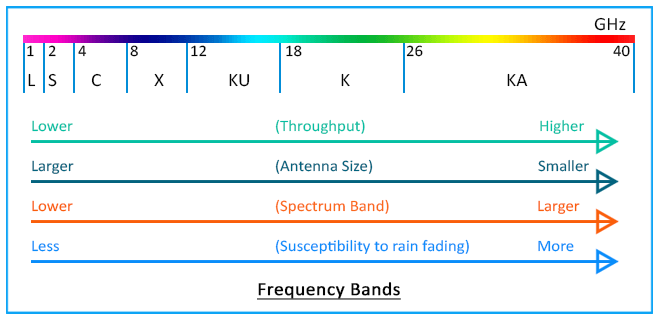
- X-band radar:
- It operates on a wavelength of 2.5-4 cm and a frequency of 8-12 GHz. Because of the smaller wavelength, the X band radar is more sensitive and can detect smaller particles.
- It is used to detect thunderstorms and lightning.
- C-band radars:
- It operates on a wavelength of 4-8 cm and a frequency of 4-8 GHz. Because of the wavelength and frequency, the dish size does not need to be very large.
- The signal is more easily attenuated, so this type of radar is best used for short range weather observation.
- It guides at the time of cyclone tracking.
- S band radars:
- It operates on a wavelength of 8-15 cm and a frequency of 2-4 GHz. Because of the wavelength and frequency, S band radars are not easily attenuated.
- This makes them useful for near and far range weather observation.
- X-band radar:
Indian Economy
Increase in Direct Tax Collections
Why in News
India’s direct tax collections in the first two and a half months (April - June) of 2021-22 stand at nearly Rs. 1.86 lakh crore, which is double the collections over the same period of last year that was affected by the national lockdown.
- The collections last year over the same period were Rs. 92,762 crore.
Key Points
- Surge in Direct Tax Collections:
- It includes Corporation Tax collections of Rs. 74,356 crore and Personal Income Tax inflows, which include the Security Transaction Tax of Rs. 1.11 lakh crore.
- The jump in the direct tax collections reflects healthy exports and a continuation of various industrial and construction activities.
- It is expected that GDP (Gross Domestic Product) will record a double-digit expansion in Quarter 1 of 2021-22.
- Direct Tax:
- A direct tax is a tax that a person or organization pays directly to the entity that imposed it.
- An individual taxpayer, for example, pays direct taxes to the government for various purposes, including income tax, real property tax, personal property tax, or taxes on assets.
- Corporation Tax:
- Corporation tax is a direct tax imposed on the net income or profit that enterprises make from their businesses.
- Companies, both public and privately registered in India under the Companies Act 1956, are liable to pay corporation tax.
- This tax is levied at a specific rate according to the provisions of the Income Tax Act, 1961.
- In September 2019, India slashed corporate tax rates to 22% from 30% for existing companies and to 15% from 25% for new manufacturing companies.
- Including a surcharge and cess, the effective tax rate for existing companies now stands at 25.17%, down from 35%.
- Security Transaction Tax (STT):
- It is a direct tax charged on purchase and sale of securities that are listed on the recognized stock exchanges in India.
- Both purchaser and seller need to pay 0.1% of share value as STT.
- Advance Tax Collections:
- Advance tax is paid by those who have tax liability of Rs. 10,000 or more in a financial year. It is paid by both salaried and businesses, thus including collections from corporate tax and personal income tax.
- Advance tax is paid as and when the money is earned in four instalments rather than at the end of the fiscal year.
- It is considered an indication of economic sentiment.
- The first instalment or 15% of the annual tax is to be paid by 15th June, the second by 15th September (30%), the third by 15th December (30%), and the rest by 15th March.
- Dividend Distribution Tax (DDT):
- Dividend refers to the distribution of profits to shareholders of a company.
- Thus, the dividend distribution tax is a type of tax that is payable on the dividends offered to its shareholders by the corporation.
- In the Union Budget for 2020-2021 the DDT was withdrawn from the tax paid by the dividend payer. Instead, from April 2021 on, dividends would be taxed in the hands of the recipients, i.e. shareholders of the distributing company.
- The proposed rate is 10% for dividends paid to shareholders resident in India and 20% if paid to foreign investors.
- TDS/TCS:
- Tax Deduction at Source: A person (deductor) who is liable to make payment of specified nature to any other person (deductee) shall deduct tax at source and remit the same into the account of the Central Government.
- Tax Collection at Source: It is an additional amount collected as tax by a seller of specified goods from the buyer at the time of sale over and above the sale amount and is remitted to the government account.
- Government Initiatives to Improve Direct Taxes:
- For Personal Income Tax - The Finance Act, 2020 has provided an option to individuals and co-operatives for paying income-tax at concessional rates if they do not avail specified exemption and incentive.
- Vivad se Vishwas: Under Vivad se Vishwas, declarations for settling pending tax disputes are currently being filed.
- This will benefit the Government by generating timely revenue and also to the taxpayers by bringing down mounting litigation costs.
- Expansion of scope of TDS/TCS- For widening the tax base, several new transactions were brought into the ambit of Tax Deduction at Source (TDS) and Tax Collection at Source (TCS).
- These transactions include huge cash withdrawal, foreign remittance, purchase of luxury cars, e-commerce participants, sale of goods, acquisition of immovable property, etc.
- ‘Transparent Taxation - Honoring The Honest’ platform: It is aimed at bringing transparency in income tax systems and empowering taxpayers.
Social Justice
Ebola Virus
Why in News
Recently, the World Health Organisation (WHO) has declared that the Ebola outbreak, that started in February 2021 in Guinea, is over now.
- In its first deadly wave in 2013-2016, the Ebola outbreak killed 11,300 people, mostly in Guinea, Sierra Leone and Liberia.
- The WHO in its list of “Ten threats to global health in 2019” also included Ebola.
Key Points
- About Ebola Virus Disease (EVD):
- EVD, formerly known as Ebola haemorrhagic fever, is transmitted to people from wild animals and spreads in the human population through human to human transmission.
- Ebola virus was first discovered in 1976 near the Ebola River in what is now the Democratic Republic of Congo.
- Transmission: Fruit bats of the Pteropodidae family are natural Ebola virus hosts.
- Animal to Human Transmission: Ebola is introduced into the human population through close contact with the blood, secretions, organs or other bodily fluids of infected animals such as fruit bats, chimpanzees, gorillas, monkeys, forest antelope or porcupines found ill or dead or in the rainforest.
- Human-to-Human Transmission: Ebola spreads via direct contact (through broken skin or mucous membranes) with:
- Blood or body fluids of a person who is sick with or has died from Ebola.
- Objects that have been contaminated with such body fluids (like blood, feces, vomit).
- Symptoms:
- These can be sudden and include: Fever, Fatigue, Muscle pain, Headache, Sore throat, Vomiting, Diarrhoea, Symptoms of impaired kidney and liver function, in some cases, both internal and external bleeding.
- Diagnosis:
- It can be difficult to clinically distinguish Ebola from other infectious diseases such as malaria, typhoid fever, and meningitis but confirmation that symptoms are caused by Ebola virus infection are made using the following diagnostic methods:
- ELISA (antibody-capture enzyme-linked immunosorbent assay)
- Reverse transcriptase polymerase chain reaction (RT-PCR) assay, etc.
- It can be difficult to clinically distinguish Ebola from other infectious diseases such as malaria, typhoid fever, and meningitis but confirmation that symptoms are caused by Ebola virus infection are made using the following diagnostic methods:
- Vaccines:
- The Ervebo vaccine has been shown to be effective in protecting people from the species Zaire ebolavirus.
- In May 2020, the European Medicines Agency recommended granting marketing authorization for a 2-component vaccine called Zabdeno-and-Mvabea for individuals 1 year and older.
- Treatment:
- Two monoclonal antibodies (Inmazeb and Ebanga) have been approved for the treatment of Zaire ebolavirus infection in adults and children by the US.
Indian Economy
Drone Survey Mandatory for All National Highways Projects
Why in News
The National Highways Authority of India (NHAI) has made use of drones mandatory for video recording of the national highway projects during different stages of development, construction, operation and maintenance.
- These videos will be saved on NHAI’s portal “Data Lake” to assess the progress made on the projects.
Key Points
- Significance:
- It will enhance transparency, uniformity and leverage the latest technology.
- NHAI officials can use the videos during the physical inspection of the projects to check the discrepancies and rectifications made on the earlier observations.
- Since these videos will be permanently stored on the ‘Data Lake’, they can also be used as evidence during the dispute resolution process before Arbitral Tribunals and Courts.
- Also the mandatory deployment of Network Survey Vehicle (NSV) to carry out road condition surveys on the National Highways will enhance the overall quality of the highways.
- NSV uses the latest survey techniques such as high-resolution digital camera for 360 degree imagery, Laser Road Profilometer and other latest technology for measurement of distress in road surface.
- NHAI’s Portal “Data Lake”:
- NHAI has gone ‘Fully Digital’ with the launch of cloud based and Artificial Intelligence powered Big Data Analytics platform – Data Lake and Project Management Software.
- All project documentation, contractual decisions and approvals are now done through the portal only.
- Data Lake software forecasts the delays, likely disputes and gives advance alerts.
- Significance:
- The Data Lake will bring revolutionary changes to NHAI with benefits like No delays, Quick decision making, No question of missing records, Work from anywhere/anytime.
- It will enhance transparency, as all officers and stakeholders connected with the project can see what is going on a real time basis.
- It will also help in carrying out audits by the senior officers and other external agencies.
- National Highways Authority of India (NHAI):
- NHAI was set up under NHAI Act, 1988.
- It has been entrusted with the National Highways Development Project (NHDP), along with other minor projects for development, maintenance and management.
- NHDP is a project to upgrade, rehabilitate and widen major highways in India to a higher standard. The project was started in 1998.
- NHAI maintains the National Highways network to global standards and in a cost effective manner, thus promoting economic well being and quality of life of the people.
National Highways
- The major roads in India are the national and state highways. National Highways (NH) are built, financed and maintained by the Central government whereas State Highways (SH) are developed by the respective States’ public works department.
- Constitutional Provisions:
- Highways declared by or under law made by Parliament to be national highways - Union List under Seventh Schedule.
- Article 257 (2): The executive power of the Union shall also extend to the giving of directions to a State as to the construction and maintenance of means of communication declared in the direction to be of national or military importance.
- Provided that nothing in this clause shall be taken as restricting the power of Parliament to declare highways or waterways to be national highways or national waterways or the power of the Union with respect to the highways or waterways so declared.
- The Ministry of Road Transport and Highways is primarily responsible for development and maintenance of NHs.
- The Ministry has taken up detailed review of NHs network with a view to develop the road connectivity to Border areas, development of Coastal roads including road connectivity for Non-Major ports, improvement in the efficiency of National Corridors, development of Economic Corridors, Inter Corridors and Feeder Routes along with integration with Sagarmala, etc., under Bharatmala Pariyojana.
- NHs in the country are notified under the National Highways Act, 1956.
- Land for development of National Highways and associated purposes is acquired under Section 3 of the NHs Act, 1956 and compensation is determined in accordance with the First Schedule of the Right to Fair Compensation and Transparency in Land Acquisition, Rehabilitation and Resettlement (RFCTLARR) Act, 2013.
- BhoomiRashi portal was launched in 2018, to fully digitize and automate the entire process of land acquisition.
- The aim of the Green Highways (Plantation, Transplantation, Beautification & Maintenance) Policy, 2015 is to promote greening of Highway corridors with participation of the community, farmers, private sector, NGOs, and government institutions.
Internal Security
India-US: PASSEX
Why in News
Indian naval ships will join maritime patrol and other aircraft to participate in a Passage Exercise or PASSEX with the US Navy’s Ronald Reagan Carrier Strike Group during its transit through Indian Ocean Region (IOR).
- A passage exercise is normally undertaken whenever an opportunity arises, in contrast to pre-planned maritime drills.
- Earlier, the Indian Navy had also conducted similar PASSEXs with the Japanese Navy and the French Navy.
Key Points
- About:
- Indian Naval Ships Kochi and Teg along with P8I (maritime patrol aircraft) and (Indian ship based) MiG 29K aircraft are participating in the PASSEX.
- The Indian Naval warships along with aircraft from Indian Navy and Indian Air Force (IAF) will be engaged in joint multi-domain operations with the US Carrier Strike Group.
- The exercise is in the IAF’s Southern Air Command’s area of responsibility and the IAF forces will include Jaguars, Sukhoi-30 MKI fighters, Air-to-Air Refueller aircraft, Airborne Warning And Control System (AWACS) and Airborne Early Warning and Control (AEW&C).
- High tempo operations during the exercise include advanced air defence exercises, cross deck helicopter operations and anti-submarine exercises.
- Previous PASSEX with US:
- The Indian Navy conducted as PASSEX with the USS Ronald Reagan in October 2020.
- Indian naval ships conducted another PASSEX with the USS Nimitz in July 2020.
- Impact:
- Establish Rule Based Order:
- It underscores the shared values as partner navies, in ensuring commitment to an open, inclusive and a rule-based international order.
- Increased Interoperability:
- It will enhance aspects of interoperability, nuances of international integrated maritime search and rescue operations and exchange of best practices in the maritime airpower domain.
- Counter China’s Expansionism:
- The exercise comes a week after the Indian defence minister called for an open and inclusive order in the Indo-Pacific region, including the South China Sea at the 8th ASEAN Defence Ministers Meeting (ADMM) Plus Meeting.
- The Indian Navy is carrying out round-the-clock surveillance in the IOR, which, it believes, China will inevitably try to enter in its quest to become a global power, just as it has laid claim to large portions of the disputed South China Sea.
- Establish Rule Based Order:
- India-US Joint Exercises:
- Vajra Prahar (Army).
- Yudh Abhyas (Army).
- Cope India (Air Force).
- Red Flag (USA’s multilateral air exercise).
- Malabar Exercise (trilateral naval exercise of India, USA and Japan).
Important Facts For Prelims
4th Tiger Reserve in Rajasthan
Why in News
Recently, the Ramgarh Vishdhari wildlife sanctuary received a nod from the National Tiger Conservation Authority’s (NTCA) technical committee to become the 4th Tiger reserve of Rajasthan.
- This will be the 52nd Tiger Reserve of India.
- The Global Tiger Day, celebrated on 29th July, is an annual event marked to raise awareness about tiger conservation.
Project Tiger
- It was launched in 1973 with 9 tiger reserves for conserving our national animal, the tiger.
- It is an ongoing Centrally Sponsored Scheme of the Ministry of Environment, Forests and Climate Change.
- Currently, the Project Tiger coverage has increased to 51 Tiger reserves, spread out in 18 tiger range states which amounts to around 2.21% of the geographical area of our country.
- The tiger reserves are constituted on a core/buffer strategy. The core areas have the legal status of a national park or a sanctuary, whereas the buffer or peripheral areas are a mix of forest and non-forest land, managed as a multiple use area.
- The NTCA was launched in 2005, following the recommendations of the Tiger Task Force. It is a statutory body of the Ministry, with an overarching supervisory/coordination role, performing functions as provided in the Wildlife (Protection) Act, 1972.
- M-STrIPES (Monitoring System for Tigers - Intensive Protection and Ecological Status) is an app based monitoring system, launched across Indian tiger reserves by the NTCA in 2010.
Protection Status of Tiger
- Indian Wildlife (Protection) Act, 1972: Schedule I
- International Union for Conservation of Nature (IUCN) Red List: Endangered.
- Convention on International Trade in Endangered Species of Wild Fauna and Flora (CITES): Appendix I.
Key Points
- Ramgarh Vishdhari wildlife sanctuary:
- Location:
- This Sanctuary is located at a distance of 45 Km from Bundi City on Bundi-Nainwa Road near Village Ramgarh, District Bundi, Rajasthan.
- Established:
- It was notified in the Year 1982 and is spread over an area of 252.79 Sq. Km.
- Area of Tiger Reserve:
- The total area of 1,017 sq. km has been identified as the reserve area comprising two forest blocks of Bhilwara, territorial forest block of Bundi and Indargarh, which falls under the buffer zone of Ranthambore Tiger Reserve (RTR).
- Biodiversity:
- Its flora consists of Dhok, Khair, Salar, Khirni trees with some Mango and Ber trees.
- The Fauna consists of birds and animals like Leopard, Sambhar, Wild boar, Chinkara, Sloth bear, Indian Wolf, Hyena, Jackal, Fox, deer and Crocodile.
- Location:
- Other Three Tiger Reserves:
- Rajasthan has three tiger reserves with over 90 big cats at Ranthambore Tiger Reserve (RTR) in Sawai Madhopur, Sariska Tiger Reserve (STR) in Alwar, and Mukundra Hills Tiger Reserve (MHTR) in Kota.
- Other Protected Areas in Rajasthan:
- Desert National Park, Jaisalmer
- Keoladeo National Park, Bharatpur
- Sajjangarh wildlife sanctuary, Udaipur
- National Chambal Sanctuary (on tri-junction of Rajasthan, Madhya Pradesh and Uttar Pradesh).
Important Facts For Prelims
Pygmy Hog
Why in News
Recently, eight captive-bred pygmy hogs, the world’s rarest and smallest wild pigs, were released in the Manas National Park of Assam.
- This is the second batch to have been reintroduced into the wild under the Pygmy Hog Conservation Programme (PHCP) in a year.
Key Points
- Pygmy Hog Conservation Programme (PHCP):
- The PHCP is a collaboration among Durrell Wildlife Conservation Trust of UK, Assam Forest Department, Wild Pig Specialist Group of International Union for Conservation of Nature (IUCN) and Ministry of Environment, Forest and Climate Change.
- It is currently being implemented by NGOs - Aaranyak and EcoSystems India.
- Conservation of pygmy hog was initiated by noted naturalist Gerald Durrell and his trust in 1971.
- The pygmy hog was brought back from near-extinction by the partnership effort, and now moving towards the establishment of a population across the entire range.
- Six hogs were captured from the Bansbari range of the Manas National Park in 1996 for starting the breeding programme.
- The reintroduction programme began in 2008 with the Sonai-Rupai Wildlife Sanctuary, Orang National Park and Bornadi Wildlife Sanctuary, all of them are in Assam.
- By 2025, the PHCP plans to release 60 pygmy hogs in Manas.
- About Pygmy Hog:
- Scientific Name: Porcula Salvania
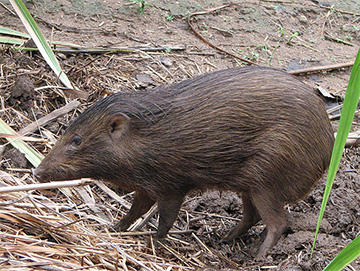
- Features:
- It is one of the very few mammals that build its own home, or nest, complete with a ‘roof’.
- It is also an indicator species. Its presence reflects the health of its primary habitat, the tall, wet grasslands of the region.
- Habitat:
- It thrives in wet grassland.
- Once found along a narrow strip of tall and wet grassland plains on the Himalayan foothills – from Uttar Pradesh to Assam, through Nepal’s terai areas and Bengal’s duars. Today found mainly in a small population in Assam.
- Protection Status:
- IUCN Red List: Endangered
- CITES: Appendix I
- Wildlife (Protection) Act, 1972: Schedule I
- Threats:
- Habitat (grassland) loss and degradation, and illegal hunting.
- Scientific Name: Porcula Salvania

.png)

